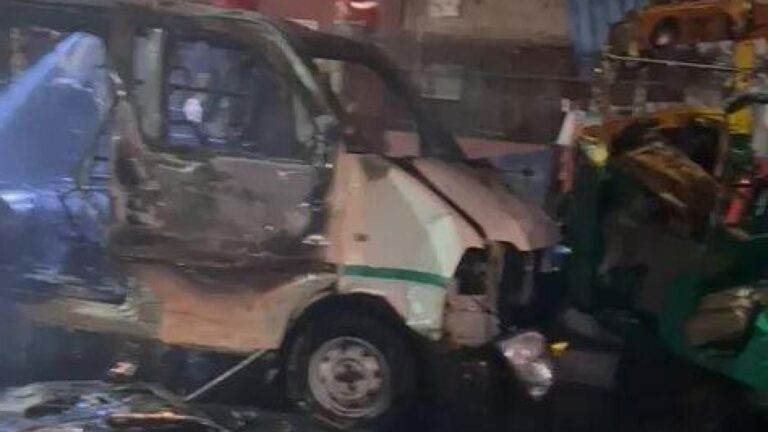
he parliament of the republic approved an initiative to declare national interest of recovery and repair of the ruins of Schooner Virgen de la CovadongaIt sank off the coast of the area. Chancay (Lima region, Huarar prefecture) Pacific War. The proposal advanced in the first round with 71 votes in favor, three against, and 13 abstentions.
As an opinion corresponding to Bill 10049/2024-CRestablishes that ship recovery is performed “Conservation conditions permit,” he said, underscoring the value of Covadonga as part of the country’s historically relevant underwater cultural heritage. This project is Congresswoman Sucel ParedesChairman of the Cultural Heritage Committee, emphasized the importance of protecting and valuing the remains of this ship for the sake of Peru’s memory and historical identity.

In accordance with the approved standards, the Ministry of Culture will be the body responsible for coordinating the necessary measures to carry out the following measures: Recovery of Covadongain cooperation with the Ministry of Defence, Lima Regional Government and Chancay District Municipality. These institutions must act within the framework of their respective powers.
The approved language indicates that the measure seeks to evaluate historic symbols of national importance in light of the effects of submarine sinking. Covadonga represents an important episode of conflict between peru and chile. The schooner was of Spanish origin and served in that country’s navy until it was captured by Chile in 1865 after the Battle of Papu de Papu, and then served in the Pacific War until it was sunk on September 13, 1880.

ruins of Schooner Covadonga They remain underwater, presenting a complex scenario for recovery attempts. According to Inspections carried out by the Peruvian Navy in 1997-1998the hull of the historic ship has virtually collapsed. According to the report, only the keel and some very deteriorated wood remain to this day.
“The ribs, the skeleton of this wooden ship, no longer had anchor points, meaning the natural turbulence of the sea had rotted the wood,” the journalist and author explained. gaston gaviola del rio.
Gaviola said the Spanish-built Covadonga, captured by Chile in 1865, was eventually sunk by a decoy ship loaded with explosives, leaving a hole more than 4 meters deep in the hull. Regarding expectations for recovery, he emphasized the following:Talking about the recovery of Covadonga is not very viable or realistic. The ship was already about 25 years old when it sank. It’s quite damaged.”
According to your mood, Major General Juan Carlos Llosa He warned that any attempt to raise the ship, which has been underwater for about 150 years, could be completely damaged. “This is a huge and expensive undertaking,” he commented during the conversation. panorama. Llosa thought it would be more practical to focus on rescuing individual pieces still found in the area and transferring them to museums for preservation and display.
When supporting a project, Congresswoman Sucel Paredes He noted that the proposal revives “old concerns” expressed by various stakeholders, including residents of Chancay, members of Congress, the military, and the Peruvian Patriotic Association. According to the congressman, Chilean ship recovery is historical demand It aims to preserve national memory and strengthen the country’s cultural identity.
Similarly, Mr. Paredes recalled that Chancay became the target of retaliation after the disappearance of the boats, as the invading forces looted and destroyed some of the infrastructure. In his presentation before the plenary session, he emphasized that “Peruvian actions hurt the morale of the invading forces.”

of Our Lady of Covadonga This ship is considered one of the most iconic ships. Pacific War. The sinking off the coast of Peru marked an important episode in the conflict and left a deep mark on the country’s maritime history.
By approving this initiative, Congress seeks to not only allow the recovery and preservation of some of the underwater cultural heritage through the rescue and preservation of the ship’s wreckage, but also to pay tribute to the Peruvian people who took part in one of the most important chapters in the country’s history.

of schooner Our Lady of Covadonga He played a decisive role in the first actions of the Pacific War. He participated in the war from the beginning of the conflict Blockade of strategic ports such as Arica and CallaoThe objective was to cut off supplies to the Peruvian army and cut off important communication routes for Allied resistance forces. Its presence at sea was key to the Chilean offensive, impeding the movement of resources and logistics to the Peruvian front.
During the conflict, Covadonga In addition to performing attack functions, it also served as escort and protection for the Chilean army during landings and land operations. But September 13, 1880 was its final destination. Off the coast of Chancay, about 500 meters from the coast, the ship, commanded by Lieutenant Colonel Pablo de Ferrari, carried out bombing missions against railway bridges deemed vital to Peruvian supplies.

What the crew didn’t know peruvian navy He had prepared traps in the area. The seemingly harmless boat had been mined by a torpedo brigade led by Lieutenant Desio Oyag Neira. The cleverly disguised explosive device detonated when the Chileans tried to approach it, causing an explosion that caused it to sink instantly. Covadonga. Thus, the ingenuity of the Peruvian sailors determined the fate of this ship, whose wreckage has remained in the depths of the Chancay Sea ever since.



